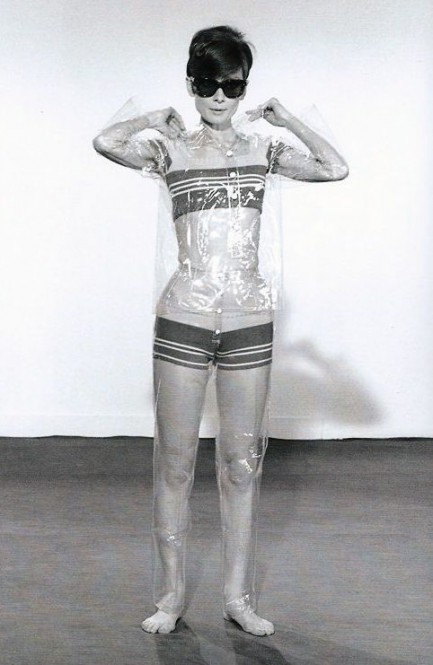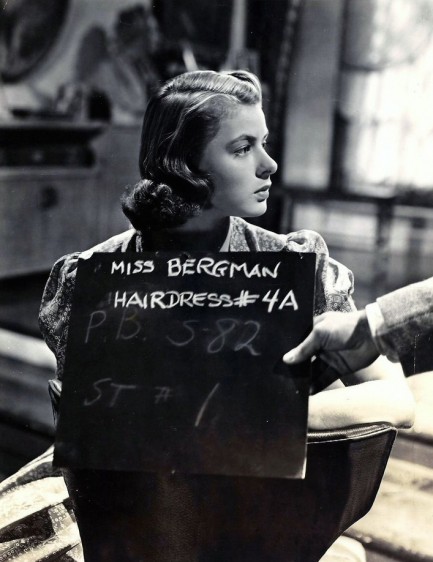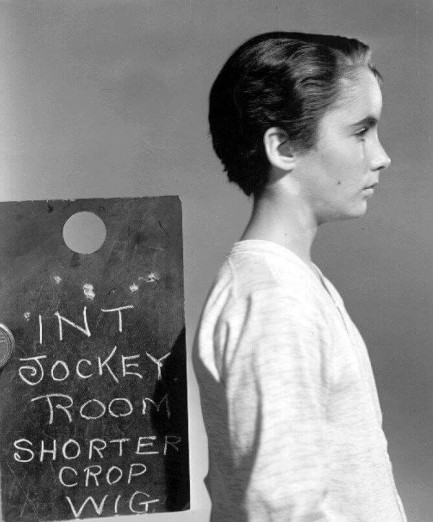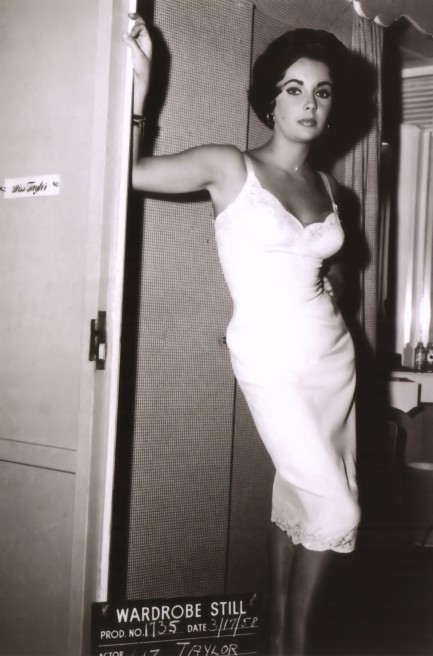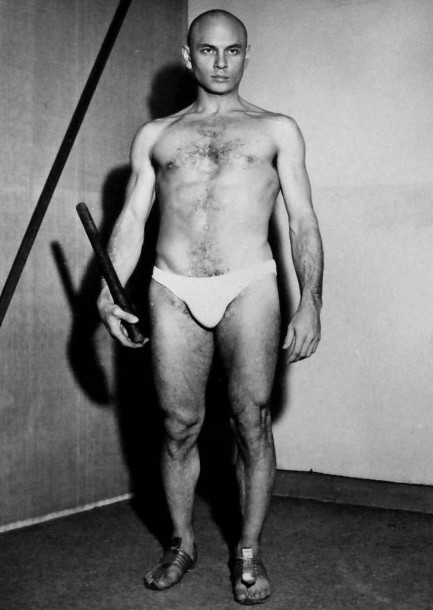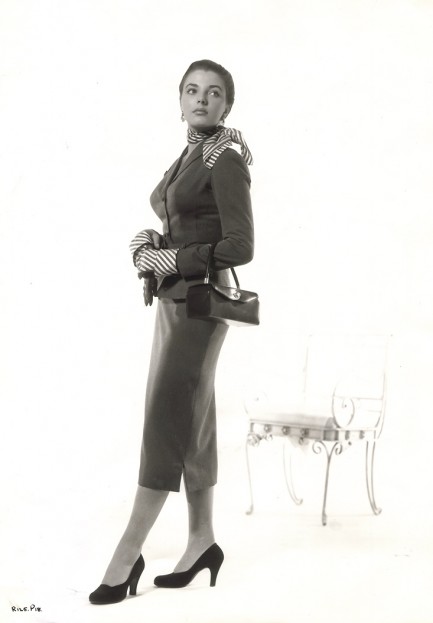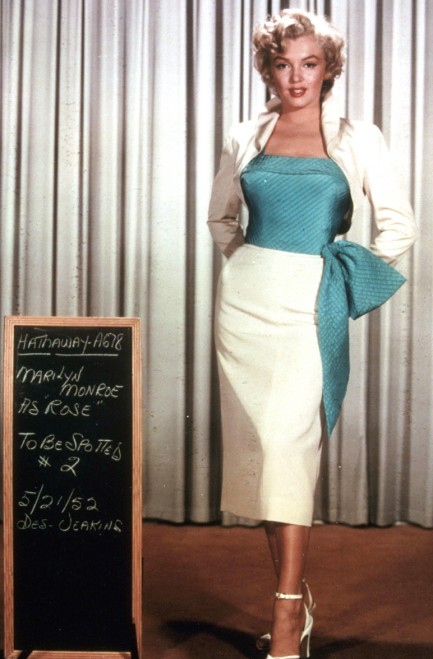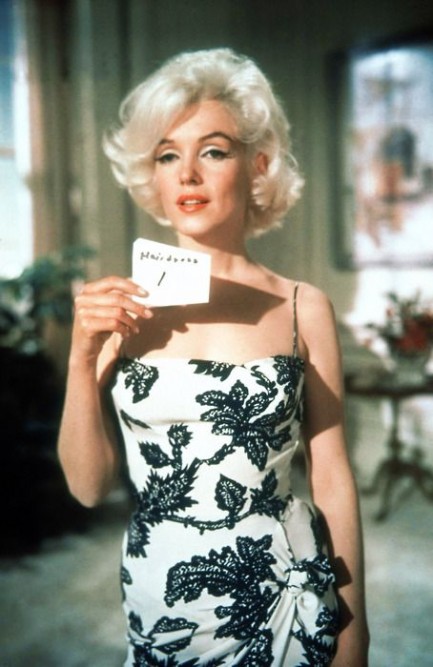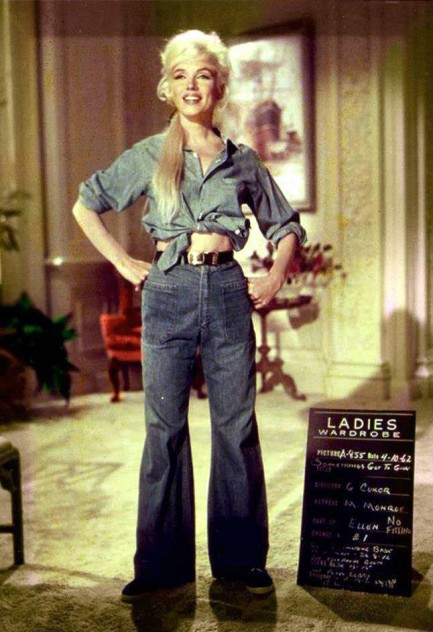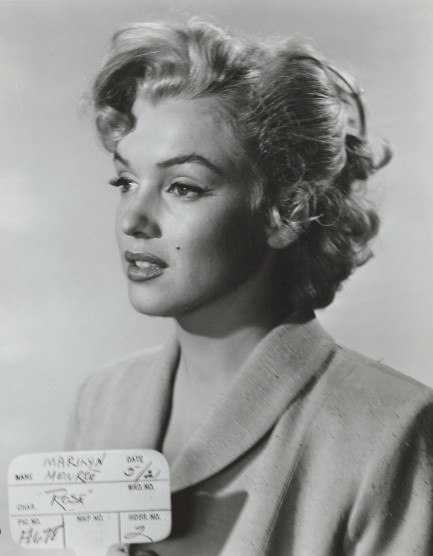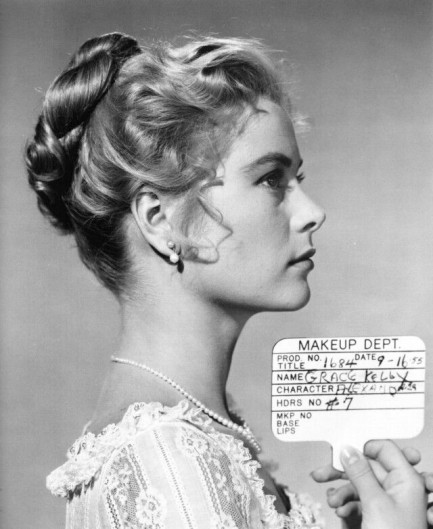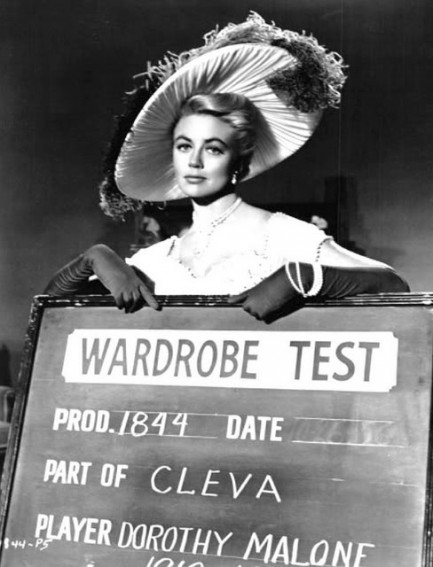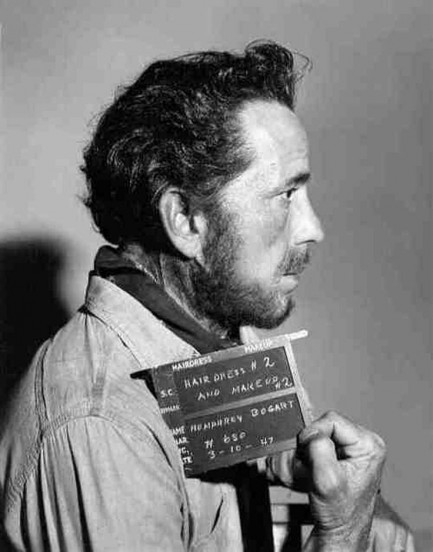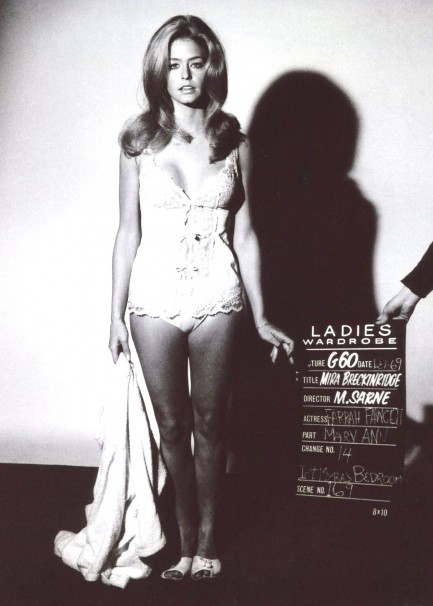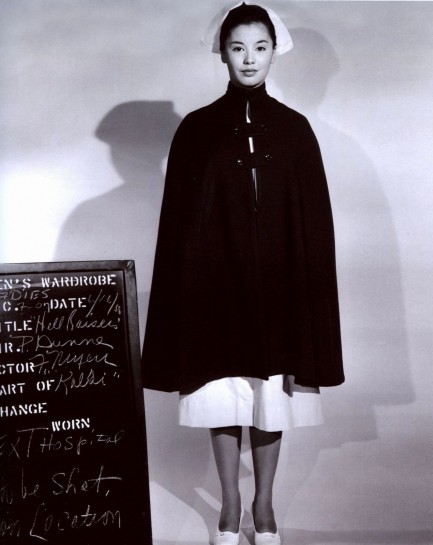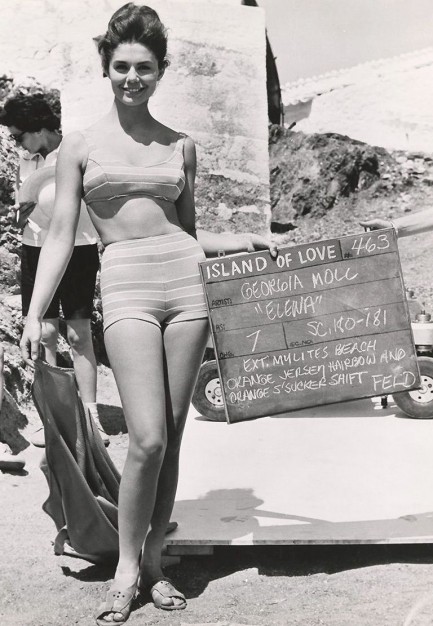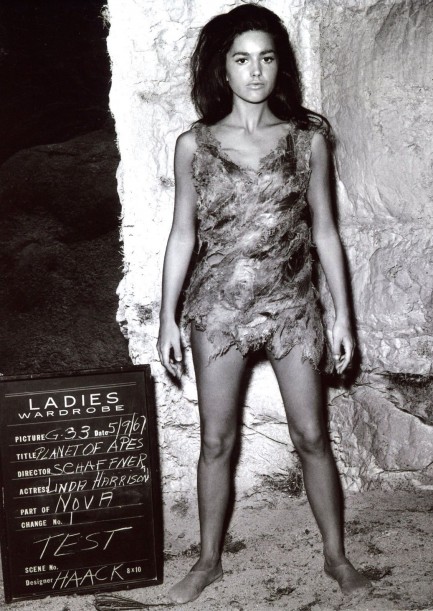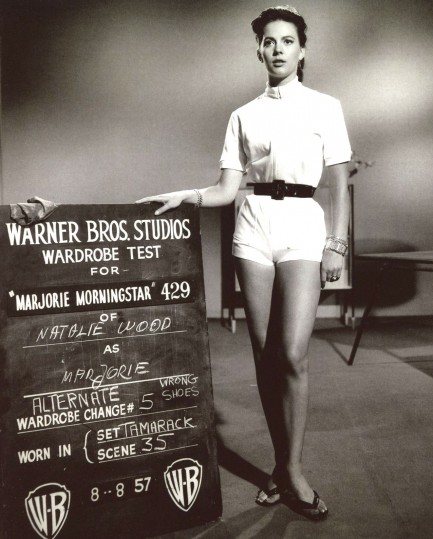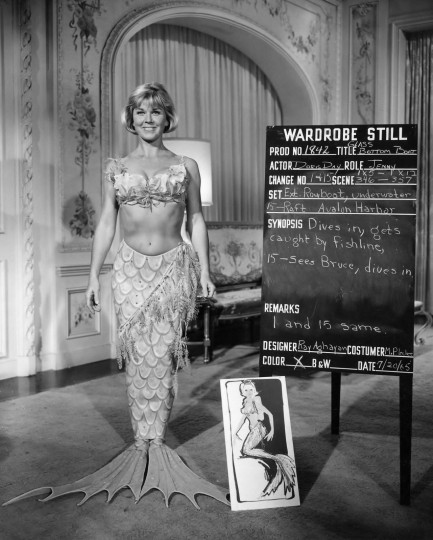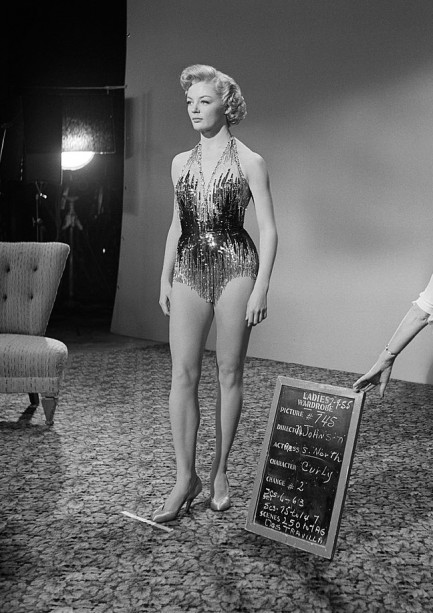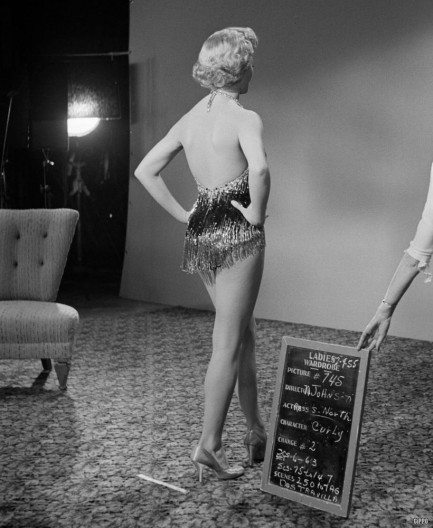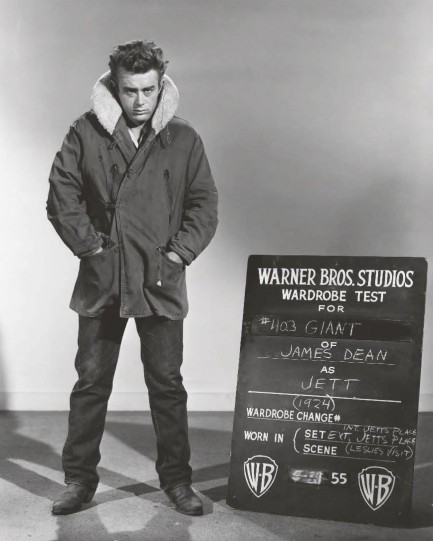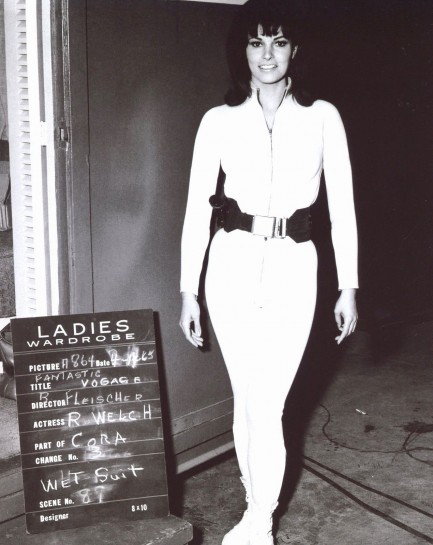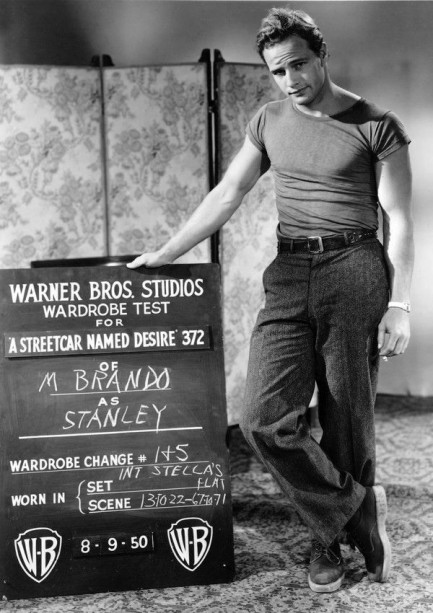 Many miles to go before you Sleep. 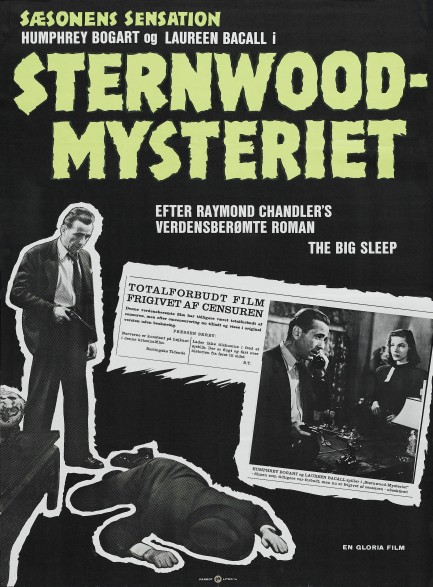
This unusual Danish photo poster was made for Sternwood-mysteriet— Actually, a quick digression. That would be a good pub quiz question, wouldn't it? It could be part of a foreign titles round. “Okay, next question. What is the original title of the film released in Denmark as Sternwood-mysteriet?” Did we ever mention that PSGP has hosted numerous pub quizzes? That's why it came to mind. Funny story: He once lost a bet and had to host one in a Speedo. Anyway, any noir fan would get the question right—Sternwood-mysteriet is better known as The Big Sleep, starring Humphrey Bogart and someone named “Laureen” Bacall.
The movie didn't premiere in Denmark until today in 1962. Why? Apparently it was banned. There could be a couple of different reasons why, or both at once. Bogart's character Sam Spade gets laid—by implication—with a bookstore clerk played by the lovely Dorothy Malone. And a central part of the complex mystery deals with illicit photos, implied to have been pornographic shots of a drugged Martha Vickers. The bookstore seduction isn't in Raymond Chandler's source novel, but the smut photos are. Haven't seen the movie? You should watch it. But carefully. 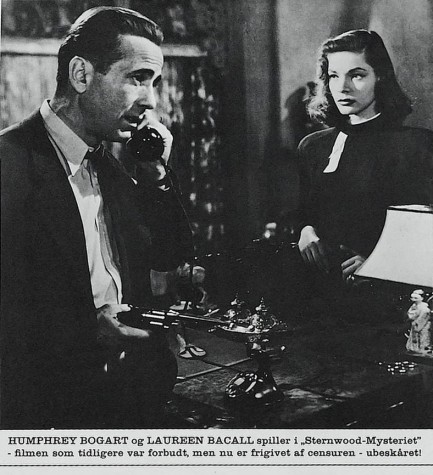 Humphrey Bogart and Lauren Bacall play in the “Sternwood-Mystery” - the film that was previously banned but is now released by the censor - uncut! Humphrey Bogart and Lauren Bacall play in the “Sternwood-Mystery” - the film that was previously banned but is now released by the censor - uncut!
 Evelyn Keyes goes from jewel thief to disease vector in The Killer That Stalked New York. 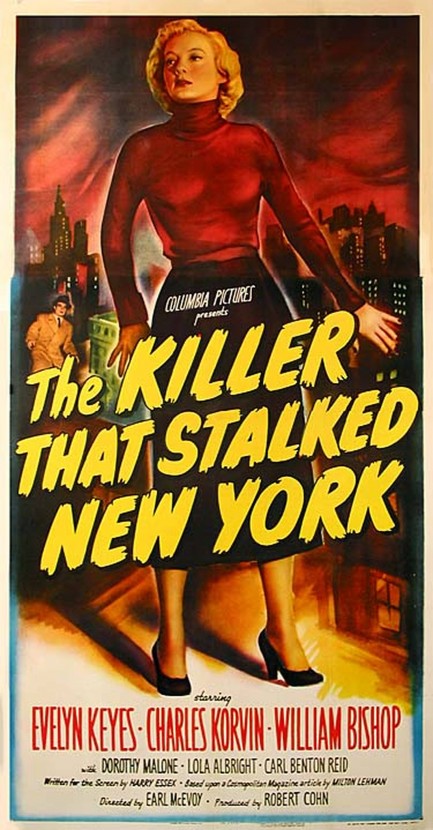 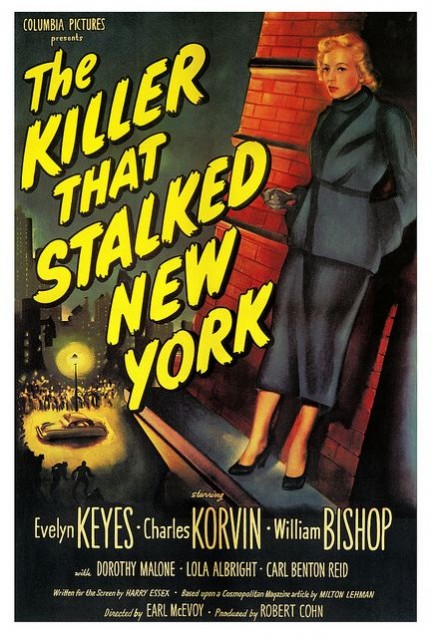
Above are a couple of excellent posters for the drama The Killer That Stalked New York, one of which features Evelyn Keyes on a high ledge. The movie is sometimes classified as a film noir, and we really don't mean to act like pain-in-the-ass purists, but we don't consider it a film noir. Plotwise, it deals with a jewel smuggler who unknowingly brings smallpox from Cuba to New York City. Keyes smuggled the jewels in for her boyfriend, but when she turns them over to him the sneaky fucker absconds. Keyes knows he has to sell them in the city, so she tries to track him down and prevent him from stiffing her, even as doctors notice that people are falling ill, manage to identify the culprit as smallpox, and try to decide how to stop the spread of the virus. Obviously, there are numerous parallels and ironies involved in watching this in the COVID-19 era. Carl Benton Reid as NYC's health commissioner: “Anyone not vaccinated is liable to get the disease. If they still refuse to submit, then tell them what they face.”
Of course, smallpox had a 30% per-case death rate compared to 1.6% in the U.S. for COVID-19, but mention that difference to people who've watched others die and see what reaction you get. What 1.6% represents, aside from a death rate, is a level of suffering at which tens of millions of adults shrug and refuse to take a shot to help save lives—at least 775,000 dead in the U.S. and counting, each of them a real person, not just a statistic. We've lost two close friends to this virus, neither in a so-called high risk category, and so has PI-1—whose friend spent weeks on a ventilator only to finally succumb to brain death. She had a six-year-old daughter. That kind of disaster kills not just the victim, but quite possibly forever harms families and loved ones.
Keyes reaches the point where her smallpox makes her like a dead woman walking, but she won't drop until she's found that chiseler of a boyfriend and made him pay for crossing her. What The Killer That Stalked New York ends up being is a crime procedural-turned medical thriller-turned double-layered chase movie. Keyes is a great, unsung star, and her willingness to uglify herself shows her commitment to the art of storytelling, but even so, the movie could be better. The two layers of story are required, because it's only Keyes' criminal status that causes her to run around dodging the cops—and by accident spreading the virus—however the film maybe should have done away with its framing narration and public service feel. At least it has Keyes. Nothing dims her luster for us—not even a mediocre script, dark rings under her eyes, and a layer of fever sweat. The Killer That Stalked New York premiered in the U.S. today in 1950.
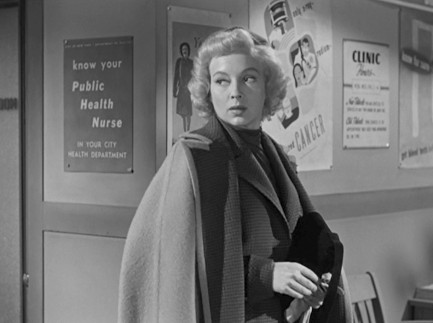 Killer virus? Whatever. I'll take my chances. Killer virus? Whatever. I'll take my chances.
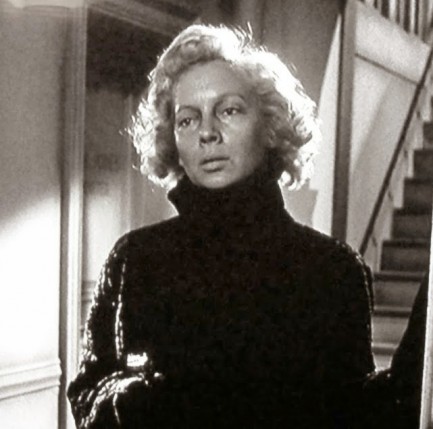 Hi, is it too late for big government to save my ass? Hi, is it too late for big government to save my ass?
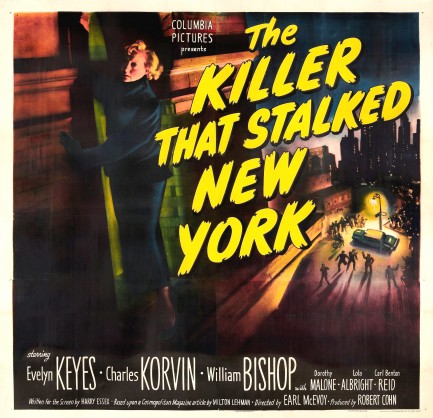 Update: It's illuminating to lurk on the Facebook pages of COVID skeptics. The farther we get from the height of the epidemic—when there were literal mass graves in New York City—the more people seem to think they're smarter than doctors and virologists. Someone we know put up a photo of a convenience store with a plexiglas screen separating them from the clerk, and railed against the precaution, calling it dumb and all the rest: "What's the point? She touches my stuff anyway when she scans it! God, people are such stupid sheep!"
People in the comments agreed. It was illustrative of social media bubbles, and how self-centered people are, and how ego shapes their thinking. It never occurred to anyone in the thread that the plexiglas screen is not for customer, but for the clerk. The customer comes and goes, and, in their genius, scoffs at the screen and determines that it's useless. But after this genius has left, the clerk they've forgotten is exposed to another customer, and another, and another, up to hundreds a day. Some of those customers probably carry COVID, but the screen will at least prevent them from coughing or sneezing on the clerk. The upshot of the entire Facebook thread was, “I don't see how this plexiglas screen helps me!” Well, it doesn't help you. It helps the person who does the essential work that keeps you fed—and skeptical. One has to marvel at people.
 Mortal man finds himself at the whims of a goddess in 1954's Pushover. 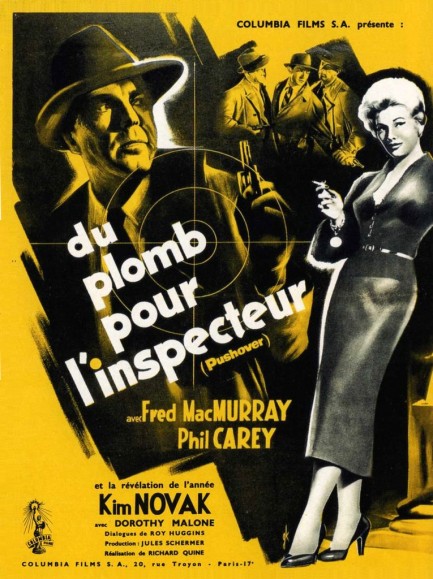
We love this bold yellow poster for Du plomb pour l'inspecteur, which was originally made in the U.S. and known as Pushover. Most important item to note here is that this is Kim Novak's first credited role, when she was aged twenty-one and looked freshly delivered to Earth on a sunbeam. Fred MacMurray plays a cop assigned to get close to her in order to snare her gangster boyfriend. MacMurray is only mortal, unlike Novak, so he immediately falls in love with her and begins seeing her outside his official duties. Not long after that he's plotting to steal her man's cache of $210,000 in bank loot. That would be about two million dollars in today's money, which is no insignificant amount. Any man would compromise his principles for that, but he'd do so even more readily for a chance to nuzzle Novak. There are a lot of old movies out there that hinge on lust as a motivating factor, but in this one it really makes sense. Performance-wise Novak can't act well yet, but like MacMurray, you'll overlook her flaws. After opening in the U.S. in 1954 Pushover premiered in France today in 1955. 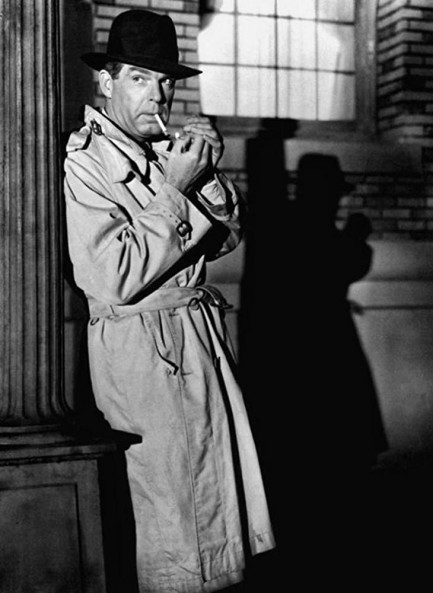 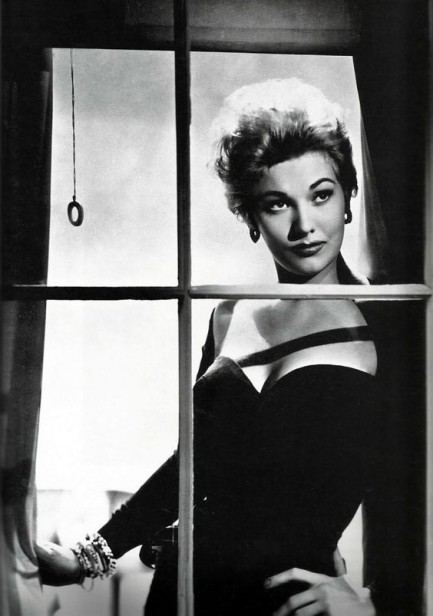 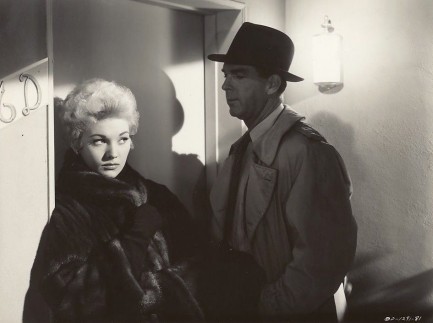 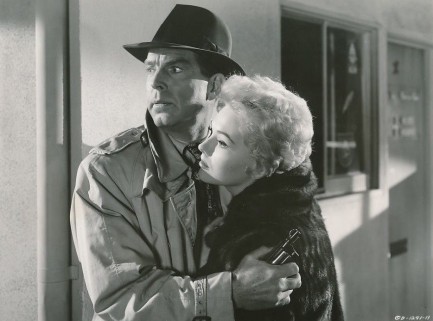 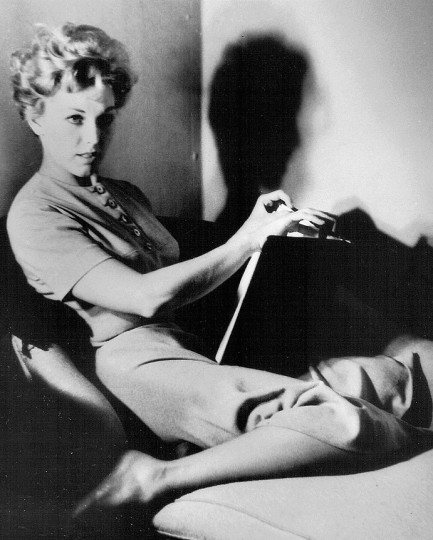
 We'd to hate to find out what the other thirty-five are like. 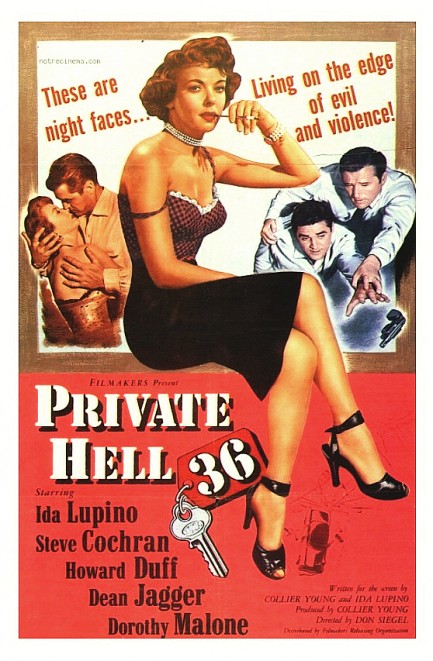 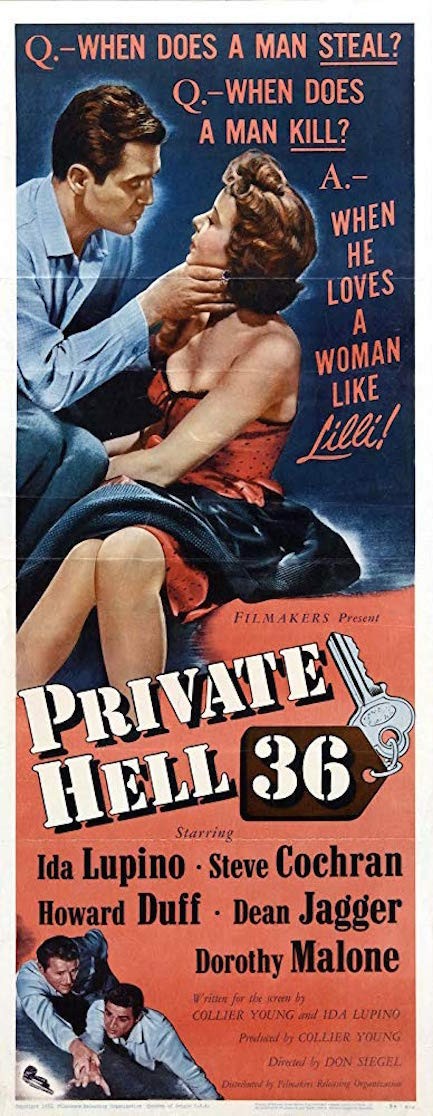
Private Hell 36. It doesn't mean anything, but what a great title. And it comes with two great promo posters. These are probably in the first two chambers of hell to lure you in. Made in 1954, this film noir co-stars and was co-written by Ida Lupino, who plays a woman who is convinced to help the police on a stakeout for a counterfeiter. She'd been passed a fake fifty but the police can't identify the crook unless she sees him and fingers him. As the days pass cop Steven Cochran takes a liking to her, and she to him. Star-crossed love in the noirish night. Lupino wants the finer things in life. Cochran wants to give them to her. When counterfeit bills start blowing on the wind, Cochran and his partner split over stealing the cash. You know where this goes—nowhere good.
Cochran is really good in this. As his decisions hurt those around him and his circumstances constrict his possibilities in the worst way, the performance he gives generates tension and empathy. Lupino does her usual great job, and the support from Dorothy Malone and Howard Duff is perfect, so in the end what you have is a solid film noir tinged with affecting interpersonal drama and working class pathos. In real life we don't feel the least bit bad for dirty cops, but that's the beauty of art—it puts you in other people's shoes and for an hour or two you understand. Private Hell 36 is short and to the point. It asks: If $80,000 landed in your lap would you keep it? In film noir, you better not. 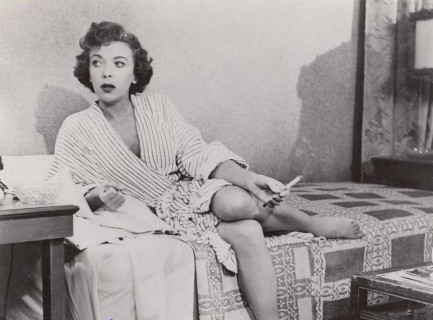 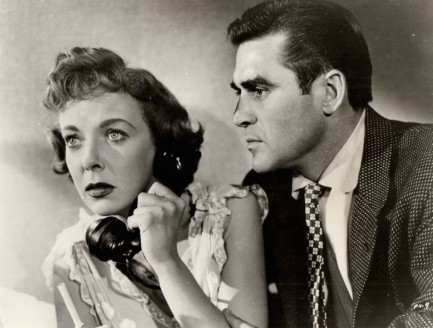 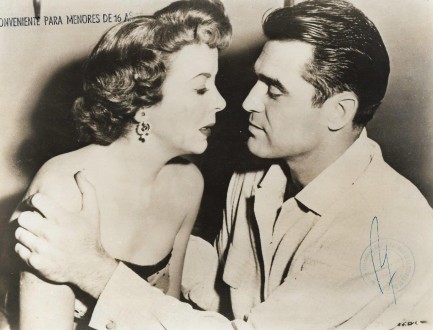 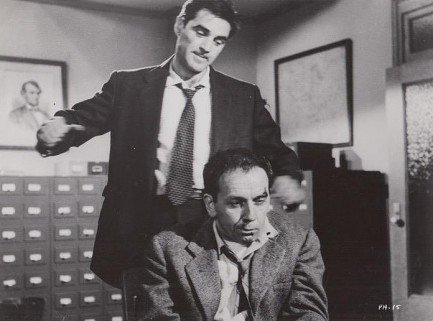 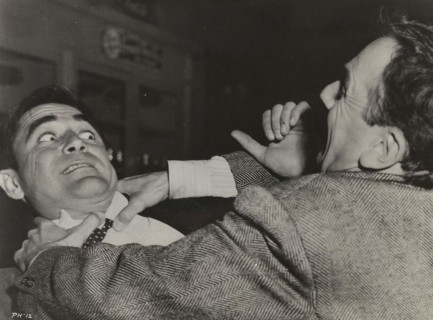 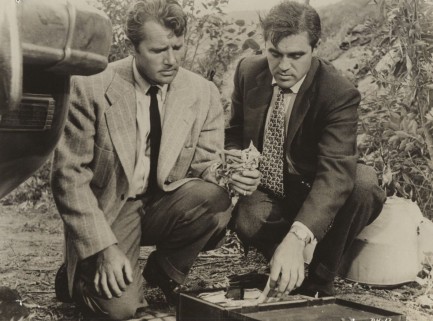 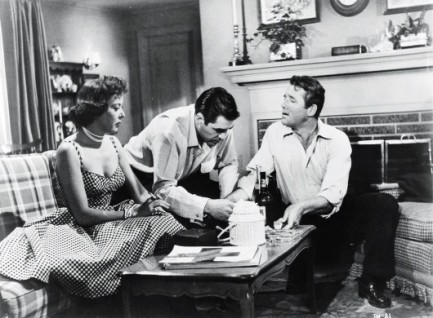 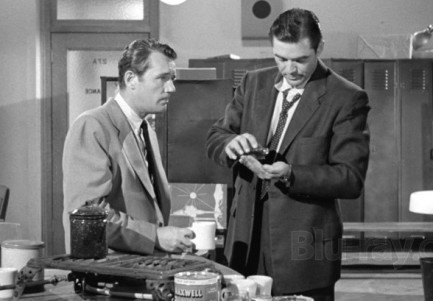 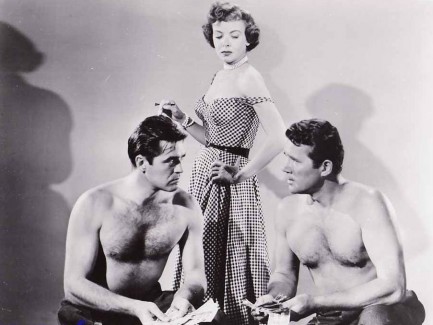
 Hold on to your hat. This is going to be a helluva ride. 
Dorothy Malone and cars go nicely together. We learned this by watching her 1955 b-thriller The Fast and the Furious, in which she's the proud owner of a Jaguar Roadster. Above you see her in another amazing machine, a 1955 Chevrolet Bel-Air convertible. At least that's what we think it is. It doesn't mater, though. Any car with Malone inside is a luxury vehicle.
 They say the truth sets you free, but a Jaguar roadster helps quite a bit too. 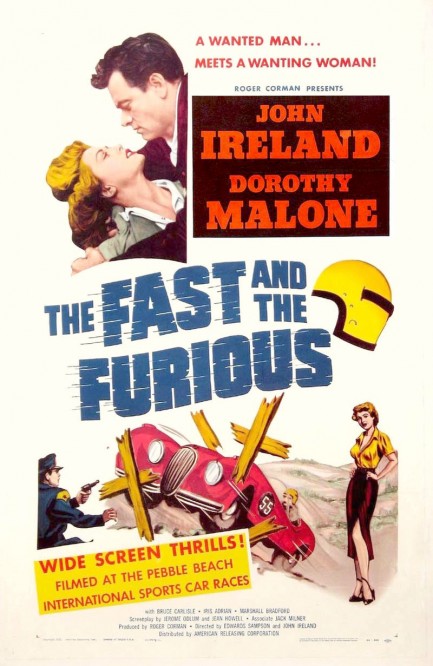
A great title cannot go unborrowed forever. The Fast and the Furious would be a good name for a film noir, a war movie, or even a romantic melodrama (young and restless, anyone?). So it was a good fit for the action franchise starring Vin Diesel. But it was first used for a little crime drama released today in 1955 starring John Ireland and Dorothy Malone. In the film, Ireland, who's been framed for murder, breaks out of jail, takes Malone hostage in her convertible Jaguar XK 120 roadster, and enters a cross-border road race hoping to get into Mexico. That's a killer concept for an action movie, but this is American International Pictures, which means it's done low budget, with lots of projection efx and stock footage in the action scenes, and minimal work on the script. But while the movie isn't great, it's certainly suitable as a Saturday night popcorn muncher. Invite witty friends, enjoy the cars, laugh at the repartee, and marvel over Dorothy Malone. 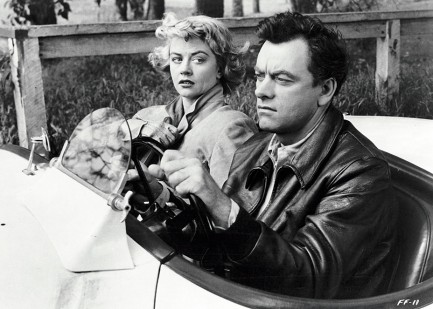
 Clothes encounters of the Hollywood kind. 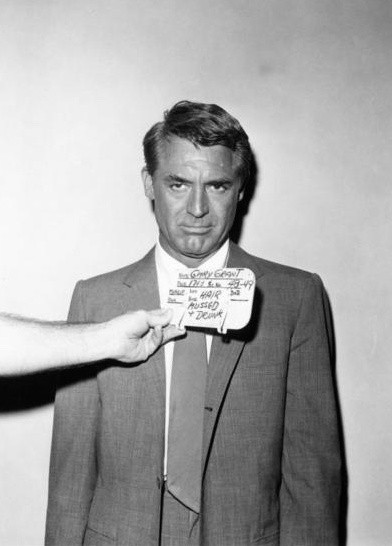 We've been gathering rare wardrobe and hairdresser test shots from the golden era of Hollywood, and today seems like a good day to share some of what we've found. It was standard procedure for all the main performers in a movie to pose for such photos, but the negatives that survive tend to belong to the most popular stars, such as Cary Grant, who you see at right. You'll see Marilyn Monroe more than amply represented below. What can we do? She's possibly the most photographed Hollywood figure ever, and she was beautiful in every exposure. But we've also found shots of a few lesser known stars, such as Giorgia Moll and France Nuyen. We've been gathering rare wardrobe and hairdresser test shots from the golden era of Hollywood, and today seems like a good day to share some of what we've found. It was standard procedure for all the main performers in a movie to pose for such photos, but the negatives that survive tend to belong to the most popular stars, such as Cary Grant, who you see at right. You'll see Marilyn Monroe more than amply represented below. What can we do? She's possibly the most photographed Hollywood figure ever, and she was beautiful in every exposure. But we've also found shots of a few lesser known stars, such as Giorgia Moll and France Nuyen.
Some of the shots are worth special note. You'll see Doris Day as a mermaid for The Glass Bottom Boat, Liz Taylor as a kid for National Velvet and an adult for Cat On a Hot Tin Roof, Farrah Fawcett in lingerie, Sheree North in both front and rear poses, and Yul Brynner looking like an actual man by sporting a body that had to that point seemingly known neither razor nor wax (he ditched the fur for his actual onscreen appearances). Usually the photos feature a chalkboard or card with pertinent information about the production and star, but not always, as in the case of Brynner's photo, and in Audrey Hepburn's and Joan Collins' cases as well. If the names of the subjects don't appear on the chalkboards you can refer to the keywords at bottom, which are listed in order. We may put together another group of these wardrobe shots later.
 They’re only being nice because they want to know where he bought his paisley sarong. 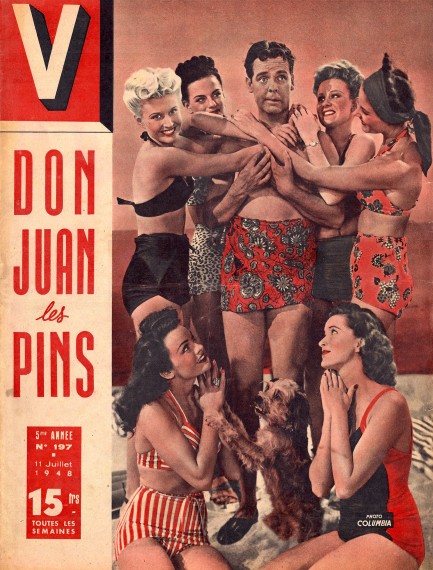
Above is the cover of an issue of V published today in 1947. Inside are various celeb and cinema features, a photo-comic written by the famed Maurice Dekobra, a back cover by Jean David, and plenty of photography, including the feature “Don Juan les pins,” or Don Juan of the Pines, whatever the hell that means. Also a bit of a mystery is the baffled looking cover star surrounded by six swooning women and a dog. He’s damnably familiar but we can’t quite place him, and since this is V we’re talking about, the editors have predictably failed to identify him. He’s a Columbia Pictures player, according to the caption, but that’s all we got. Anyone recognize him? Drop us a line. Thanks. Update: So we have the answer from Nick, who informs us this is Arthur Lake, who played Dagwood in the U.S. television series Blondie, based on the famous comic strip. Thanks a million for that info. This also seems like a good time to thank not just Nick, but all Pulp Intl. readers. Your support and knowledge is essential to making this site work and we always appreciate it. Update 2: Now it all becomes clear. A reader informs us that "Don Juan les pins" is a play on words. Juan-les-pins is a popular vacation spot in France, located on the Côte d'Azur between Nice and Cannes. 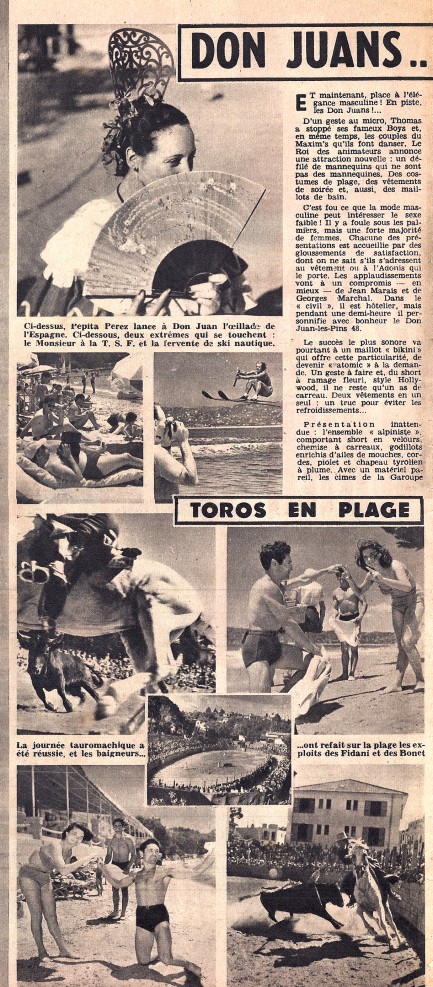   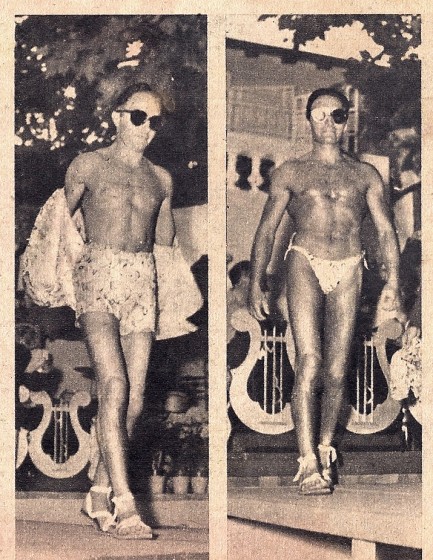 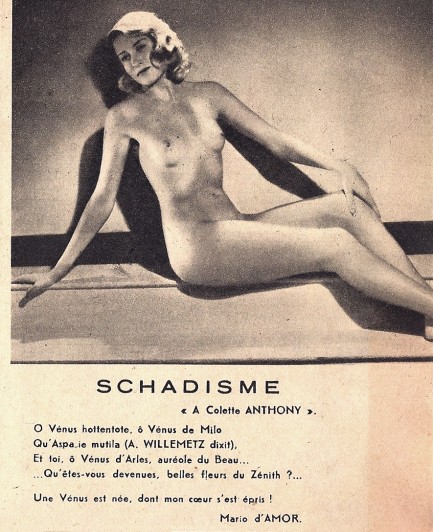 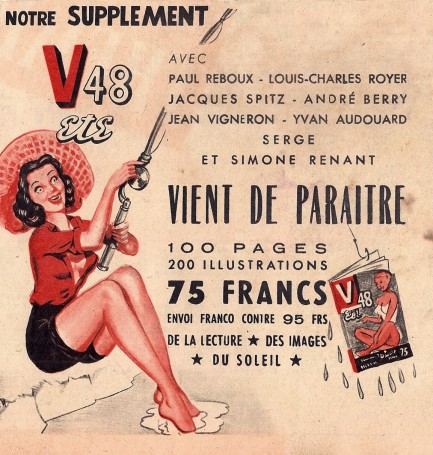 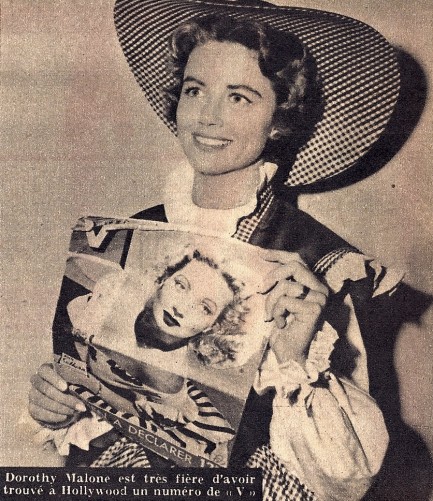 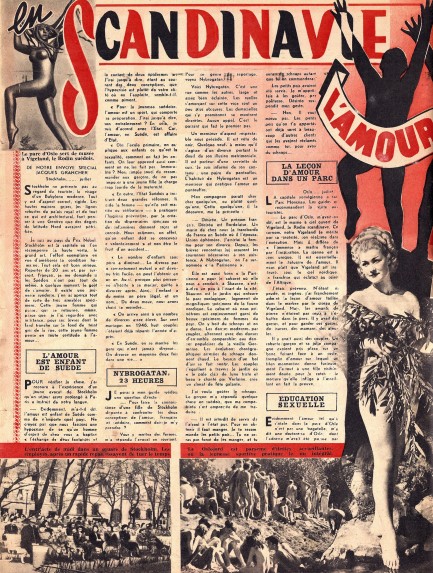 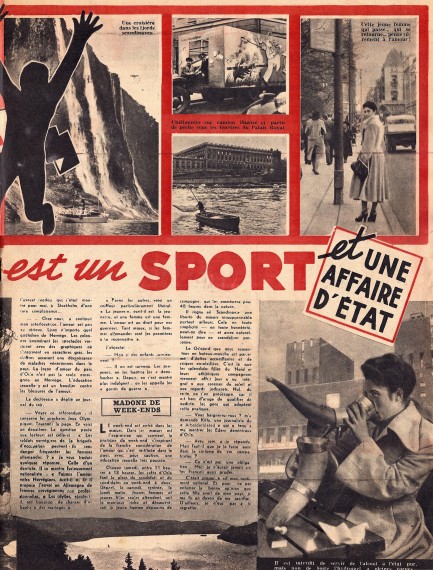 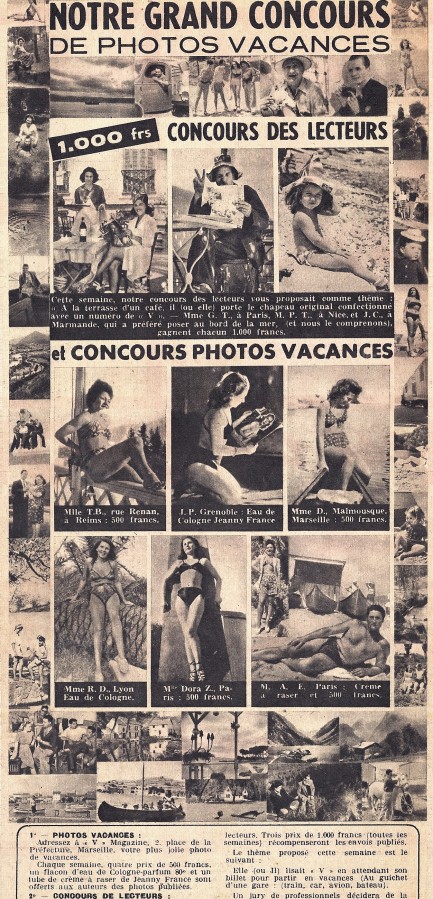   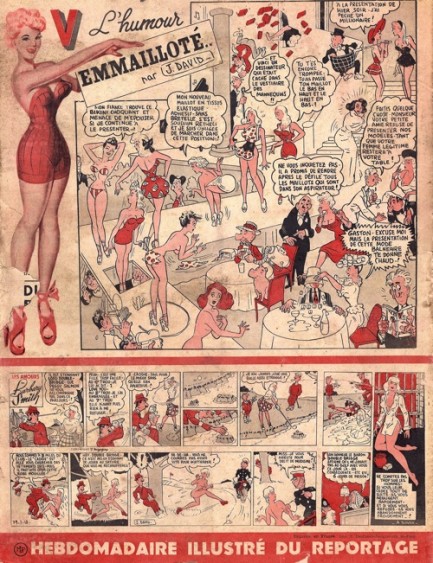
 Even cowgirls get the blues you say? Hmmph. Never happened to me. 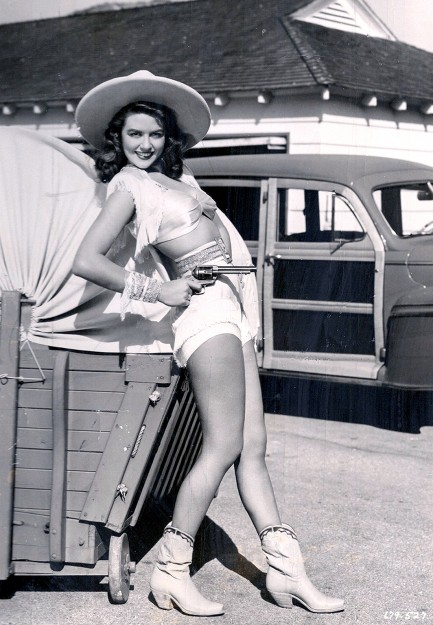
Whenever a very old actor dies you inevitably read that he or she had been one of the last surviving remnants of Hollywood’s golden age. In reality, there are many actors and actresses still living from that period and above you see a good example in Dorothy Malone, who began her cinema career in 1943 and appeared in films such as Artists and Models, 1955’s The Fast and The Furious, and of course The Big Sleep, in which she played the world’s hottest bookstore clerk. Not sure of the year on the cowgirl shot, but we think 1947 is a very good guess. 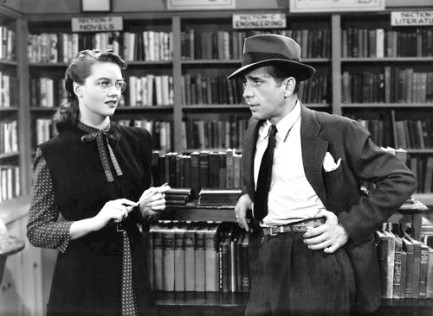
|
 |

The headlines that mattered yesteryear.
1939—Batman Debuts
In Detective Comics #27, DC Comics publishes its second major superhero, Batman, who becomes one of the most popular comic book characters of all time, and then a popular camp television series starring Adam West, and lastly a multi-million dollar movie franchise starring Michael Keaton, then George Clooney, and finally Christian Bale. 1953—Crick and Watson Publish DNA Results
British scientists James D Watson and Francis Crick publish an article detailing their discovery of the existence and structure of deoxyribonucleic acid, or DNA, in Nature magazine. Their findings answer one of the oldest and most fundamental questions of biology, that of how living things reproduce themselves. 1967—First Space Program Casualty Occurs
Soviet cosmonaut Vladimir Komarov dies in Soyuz 1 when, during re-entry into Earth's atmosphere after more than ten successful orbits, the capsule's main parachute fails to deploy properly, and the backup chute becomes entangled in the first. The capsule's descent is slowed, but it still hits the ground at about 90 mph, at which point it bursts into flames. Komarov is the first human to die during a space mission. 1986—Otto Preminger Dies
Austro–Hungarian film director Otto Preminger, who directed such eternal classics as Laura, Anatomy of a Murder, Carmen Jones, The Man with the Golden Arm, and Stalag 17, and for his efforts earned a star on Hollywood's Walk of Fame, dies in New York City, aged 80, from cancer and Alzheimer's disease. 1998—James Earl Ray Dies
The convicted assassin of American civil rights leader Martin Luther King, Jr., petty criminal James Earl Ray, dies in prison of hepatitis aged 70, protesting his innocence as he had for decades. Members of the King family who supported Ray's fight to clear his name believed the U.S. Government had been involved in Dr. King's killing, but with Ray's death such questions became moot.
|

|
|

It's easy. We have an uploader that makes it a snap. Use it to submit your art, text, header, and subhead. Your post can be funny, serious, or anything in between, as long as it's vintage pulp. You'll get a byline and experience the fleeting pride of free authorship. We'll edit your post for typos, but the rest is up to you. Click here to give us your best shot.

|
|


 Humphrey Bogart and Lauren Bacall play in the “Sternwood-Mystery” - the film that was previously banned but is now released by the censor - uncut!
Humphrey Bogart and Lauren Bacall play in the “Sternwood-Mystery” - the film that was previously banned but is now released by the censor - uncut!


 Killer virus? Whatever. I'll take my chances.
Killer virus? Whatever. I'll take my chances. Hi, is it too late for big government to save my ass?
Hi, is it too late for big government to save my ass?




















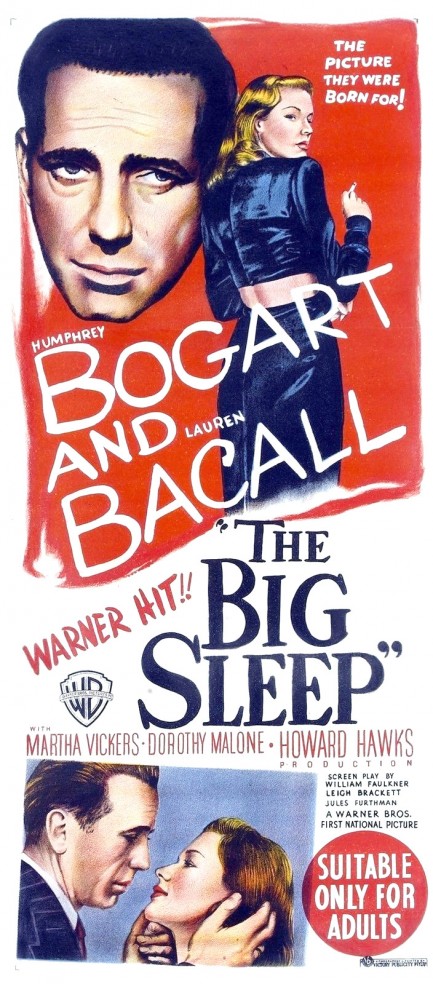

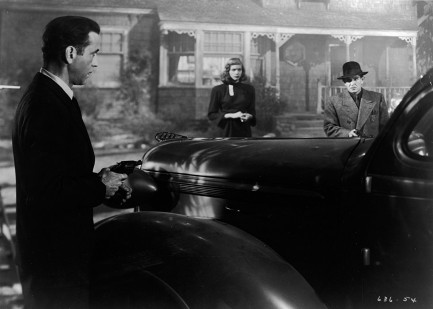
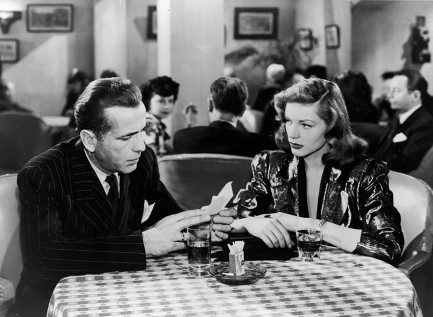
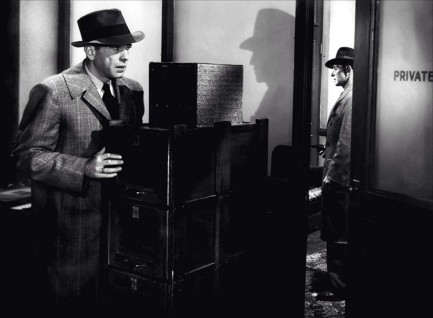
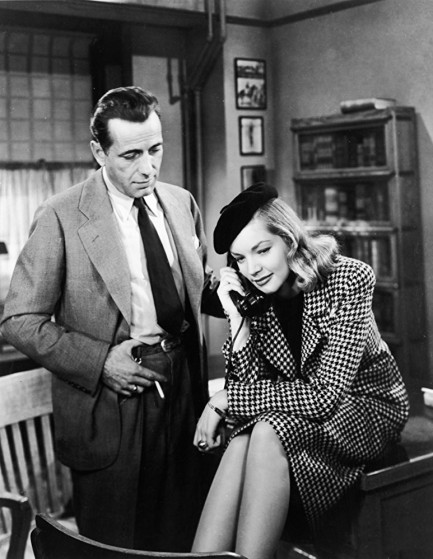
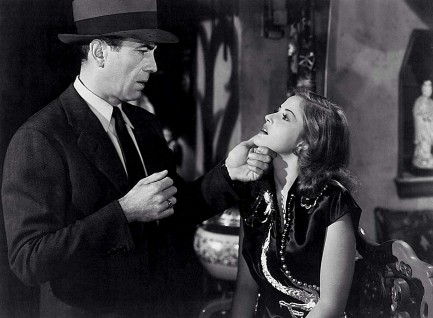
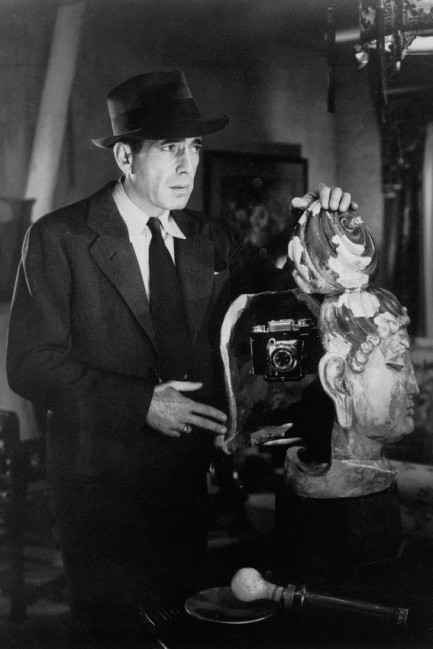
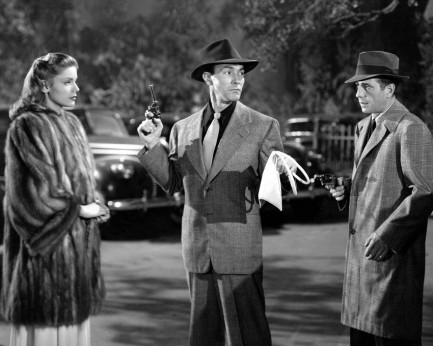
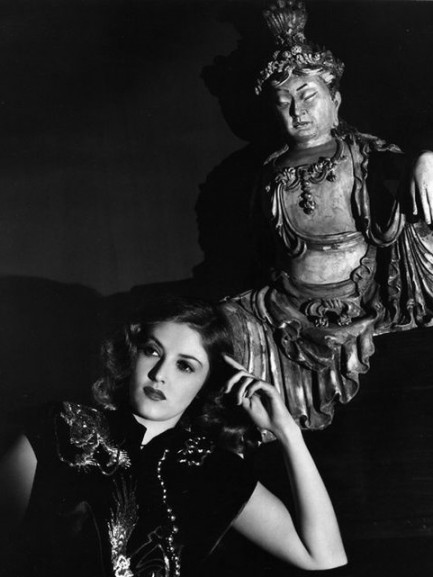
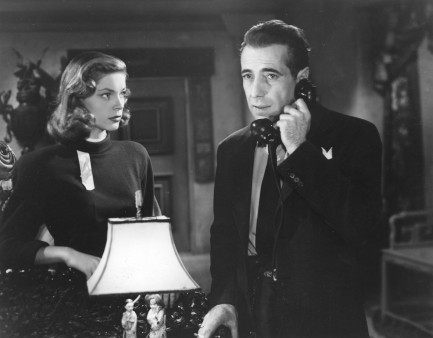
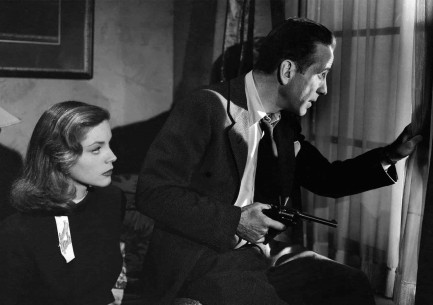
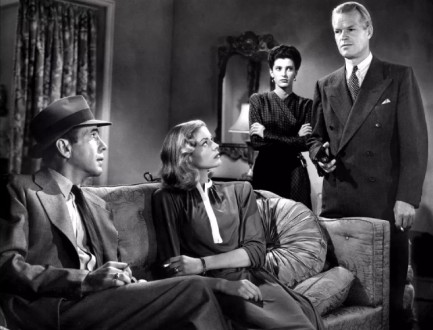






 We've been gathering rare wardrobe and hairdresser test shots from the golden era of Hollywood, and today seems like a good day to share some of what we've found. It was standard procedure for all the main performers in a movie to pose for such photos, but the negatives that survive tend to belong to the most popular stars, such as Cary Grant, who you see at right. You'll see Marilyn Monroe more than amply represented below. What can we do? She's possibly the most photographed Hollywood figure ever, and she was beautiful in every exposure. But we've also found shots of a few lesser known stars, such as Giorgia Moll and France Nuyen.
We've been gathering rare wardrobe and hairdresser test shots from the golden era of Hollywood, and today seems like a good day to share some of what we've found. It was standard procedure for all the main performers in a movie to pose for such photos, but the negatives that survive tend to belong to the most popular stars, such as Cary Grant, who you see at right. You'll see Marilyn Monroe more than amply represented below. What can we do? She's possibly the most photographed Hollywood figure ever, and she was beautiful in every exposure. But we've also found shots of a few lesser known stars, such as Giorgia Moll and France Nuyen.